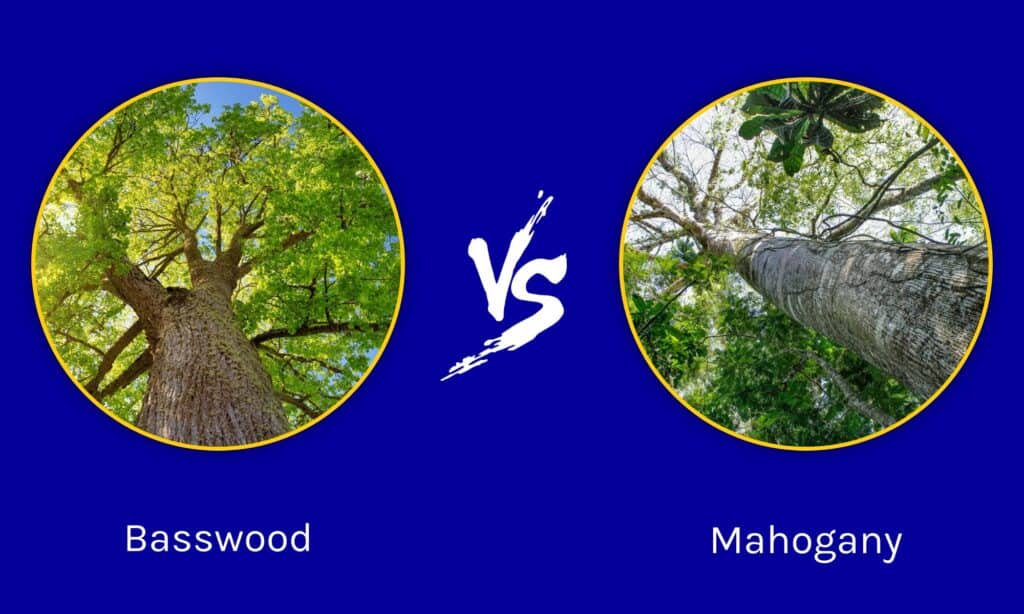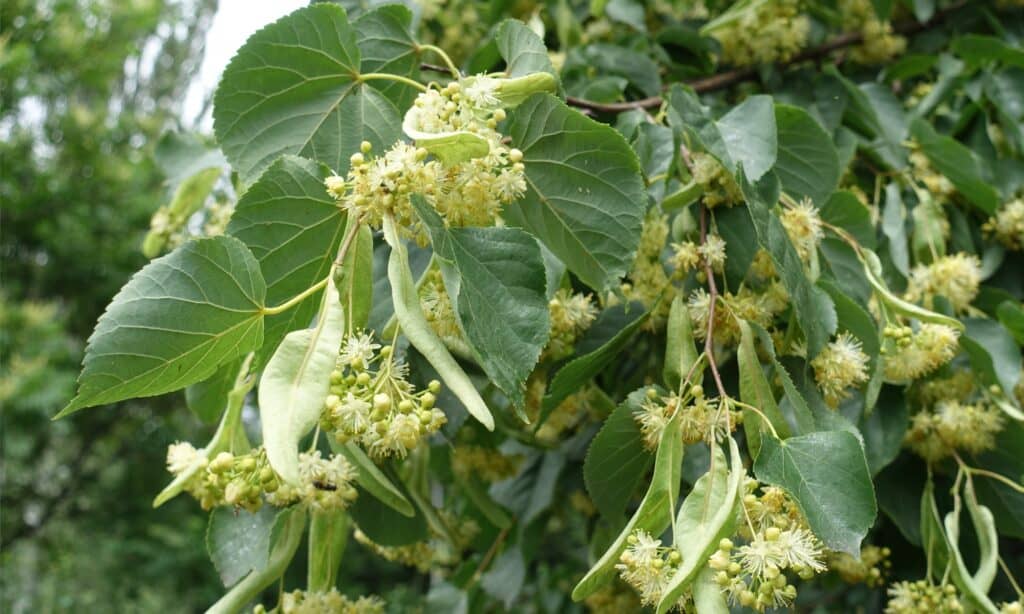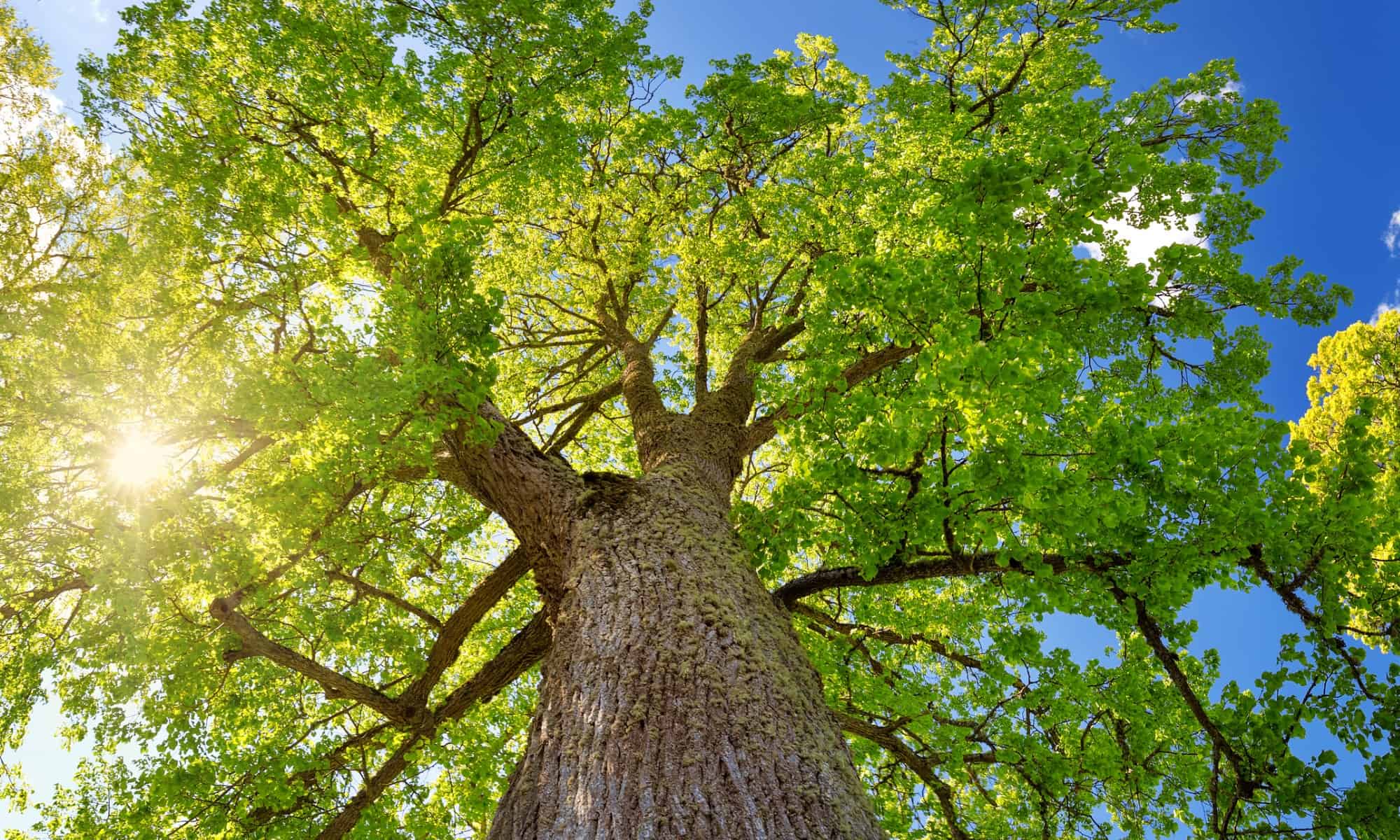While some hobbyists use them interchangeably, there are a few key differences between basswood vs mahogany. When it comes to knowing which of these trees is right for you as well as whether or not you’ve purchased the right timber for a woodworking project, you’re in the right place.
In this article, we will compare and contrast basswood and mahogany trees so that you can fully understand the differences between them. We will go over what these trees look like, where they grow best, and how their woods differ from each other in terms of their aesthetics and uses. Let’s get started now!
Comparing Basswood vs Mahogany

| Basswood | Mahogany | |
|---|---|---|
| Plant Classification | Tilia americana | Swietenia macrophylla |
| Description | Reaches up to 130 feet tall, with spreading branches and a rounded top. Leaves are simple with slightly toothed edges, and the bark is gray brown with cracked texture. Produces many flowers if planted with care. | Reaches anywhere from 60-150 feet tall, with a fairly uniform height and width. Leaves are simple and grow opposite each other, and the bark is deeply textured in gray and brown shades. Produces inedible dark fruits full of seeds. |
| Uses | Popular wood for beginning woodworkers or crafters, but also used to manufacture guitars and other items. Interior fibers historically used for rope making. | Extremely valuable and prized wood for furniture and coffin making, as well as boat building and plywood. Great for technical or precise woodworking projects as well, given its ease of use and beautiful finish. |
| Origin and Growing Preferences | Native to North America; grows best in full sun and average moisture. Typically very hardy | Native to Central and South America; grows best in full sunlight and thrives along coastlines |
| Grain Features | The wood itself is fine-grained and light in color, with a light weight and soft texture. Not very much detail to the wood itself. | The wood itself is red-brown, with intricate and uneven grains, often favored by many consumers for this reason. |
Key Differences Between Basswood vs Mahogany

The leaves on the North American basswood tree are serrated and wider compared to the simple, narrow leaves found on the average mahogany tree.
©iStock.com/apugach
There are a number of key differences between basswood and mahogany. For example, basswood trees and mahogany trees belong to very different plant families and species from one another. The average basswood tree produces flowers, while mahogany trees produce seed pods. While they are both technically hardwood trees, basswood is much softer and less detailed compared to the intricate grains associated with mahogany wood.
Let’s go over all of these differences in more detail now.
Basswood vs Mahogany: Classification
While these trees have similar uses in the commercial timber and manufacturing industry, they are technically unrelated to each other. Basswood belongs to the Malvaceae or mallow family, while mahogany belongs to the Meliaceae or mahogany family. Looking at their classifications in more detail, basswood from North America is classified as Tilia americana, while the most prevalent species of mahogany tree grown commercially is known as Swietenia macrophylla.
Basswood vs Mahogany: Description

Basswood is a popular wood for beginning woodworkers and hobbyists, while mahogany is prized by expert woodworkers and furniture craftsmen.
©iStock.com/passion4nature
It’s fairly easy to tell mahogany apart from basswood, no matter what state the tree happens to be in. The average mahogany tree grows taller than the average basswood tree, but there are many subspecies associated with both trees that range in height. The leaves on the North American basswood tree are serrated and wider compared to the simple, narrow leaves found on the average mahogany tree.
Both basswood and mahogany trees grow with deeply textured or scaly bark. However, basswood trees have a grayer and browner color compared to the reddish brown color associated with mahogany bark. Finally, the basswood tree produces beautiful, fragrant flowers, while mahogany trees produce dark, inedible fruit full of seeds.
Basswood vs Mahogany: Uses

The texture and workability of basswood is much softer compared to the hard and sturdy texture of mahogany.
©iStock.com/LeManna
Both hardwood trees, mahogany and basswood are used for a variety of purposes and are prized commercially for very different reasons. For example, basswood is a popular wood for beginning woodworkers and hobbyists, while mahogany is prized by expert woodworkers and furniture craftsmen.
In addition to a variety of woodworking projects, mahogany is popular in coffin making, while basswood is a great alternative to other woods in the production of guitars. The softness of basswood makes it easy to work with but not ideal for intricate projects, something that mahogany is great for. In fact, mahogany is prized for its uses in detailed projects, as well as boat or plywood making.
Basswood vs Mahogany: Origin and How to Grow
Basswood trees and mahogany trees originated in very different locations from each other. While there are other varieties of both mahogany and basswood trees, the basswood tree discussed in this article originated in North America, while the mahogany tree discussed in this article originated in South and Central America.
You can grow either basswood trees or mahogany trees in your own backyard, if you have enough space. Both of these trees thrive in full sun, especially basswood trees. If you want particularly full and beautiful blooms, make sure to plant your basswood sapling in full sun! Mahogany trees are hardy and tend to enjoy the salty air of most coastlines, while basswood trees have very few needs after being planted.

Basswood is typically lighter in color compared to the deep brownish red color of mahogany wood.
©iStock.com/Paralaxis
Basswood vs Mahogany: Grain Features
The final and primary difference between mahogany and basswood lies in the appearance and texture of their woodgrains. For example, basswood is typically lighter in color compared to the deep brownish red color of mahogany wood.
The texture and workability of basswood is much softer compared to the hard and sturdy texture of mahogany. While both of these woods serve a distinct purpose, the detailed and irregular grain found within mahogany wood is highly prized, while basswood is much more plain by comparison.
Thank you for reading! Have some feedback for us? Contact the AZ Animals editorial team.








